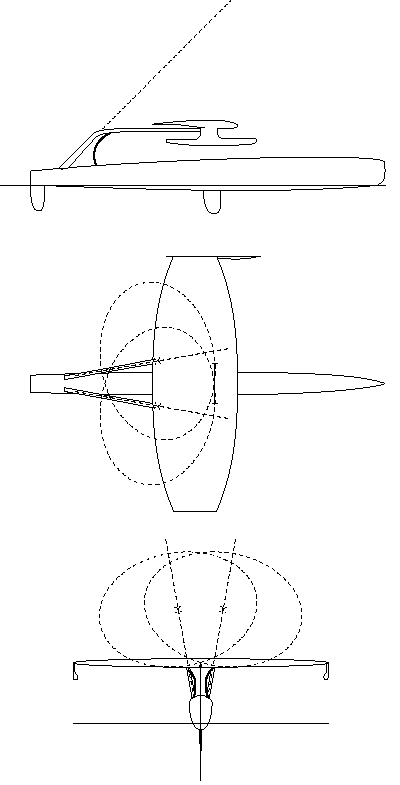Robert's other Bernard Smith-inspired designs can be viewed here. You can contact Robert at this email address.

Here is some explanation of my swingtacker concept. The wing sort of swings from side to side (low in the middle and high on either side):
This design is a variation on the fliptacker theme. A potential problem of the fliptacker is that the rig must be raised to get it to the other side. At small sizes that can be done by using the crew's weight. At larger sizes Bernard Smith suggested either using a gas-filled buoyant sail, or a split hull so that the weight of the boat does most of the work (as the rig rises the hull goes down and vice versa). Here is an alternative idea, which has drawbacks that I will discuss below.
The principle of this design is that the centre of gravity of the rig does not rise as it moves across the boat. On the contrary, the CoG is lowest when the rig is in the centre. That is achieved by attaching the rig to two spars that rotate around axes that are both raked forward and a little outwards. The stippled lines show rotation axes and the arcs along which the tips of the spars travel. The fat curved lines at the stern are springs that counteract the weight of the rig so that it takes just a little bit of effort to pull down to the centre.
The advantage of this design is that getting the rig across to the other side should be easy. Drawbacks are complication and likely higher weight. Also, Bernard Smith's fliptackers would be self-righting after capsize if there is some bouyancy in foils, spars or floats. This design would probably be stable upside-down.
On the whole, I don't think the possible advantage is worth the drawbacks, and I think the original design is better.

